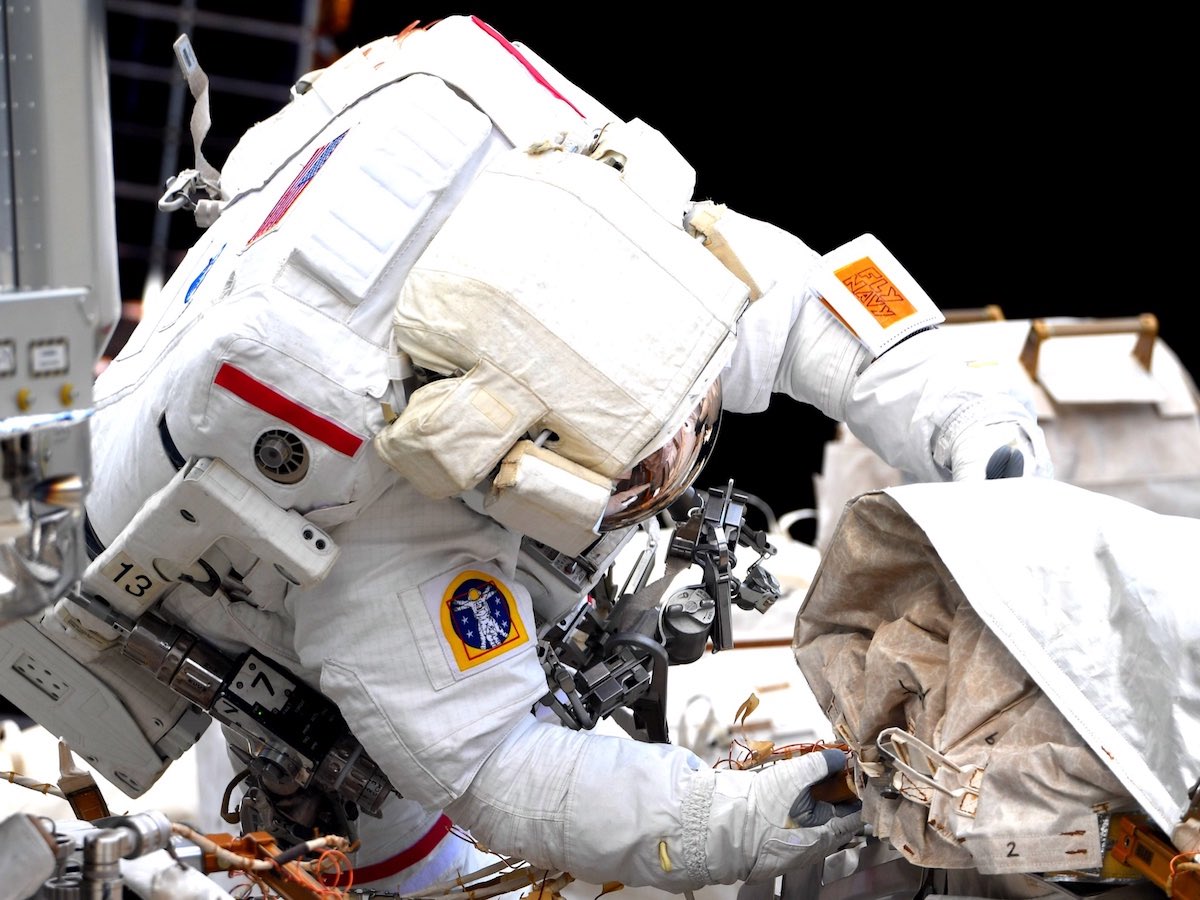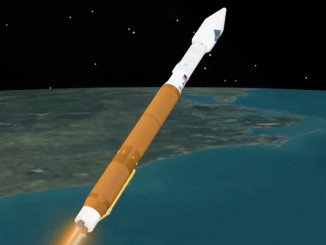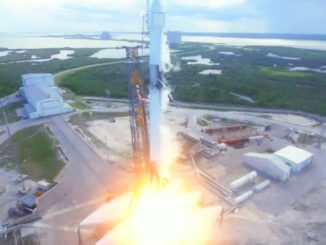STORY WRITTEN FOR CBS NEWS & USED WITH PERMISSION

@AstroVicGlover
soars over US LAB module.” Credit: Soichi Noguchi/JAXA/NASA
Struggling with balky electrical connectors, spacewalker Mike Hopkins managed to plug in and secure three of four thick power and data cables Saturday that are needed by a European experiment platform, leaving one cable for additional troubleshooting.
Hopkins and crewmate Victor Glover also vented residual ammonia coolant from two jumpers used to service the station’s thermal control system, stowing the hoses in different locations for future use if needed.
One jumper spewed more ammonia ice crystals than expected when it was vented to space, but the astronauts said their suits did not appear to be contaminated with any flakes that could be brought back into the station.
Glover replaced a wireless camera transceiver and attached a stiffener to a flexible thermal cover on the Quest airlock’s outer hatch. He complained of an unusual irritation that briefly caused his right eye to tear up, but said repeated blinking seemed to help.
Hopkins also reconfigured a HAM radio antenna on the European Columbus module that failed to work correctly after a recent upgrade and both spacewalkers began work to route two ethernet cables that eventually will be part of an expanded external wi-fi network.
All of the major tasks originally were planned for spacewalks earlier this month but they were deferred after the assembly of two solar array support fixtures took longer than expected.
Floating in the Quest airlock, Hopkins and Glover began Saturday’s excursion when they switched their spacesuits to battery power at 8:14 a.m. EST, kicking off the 237th spacewalk, or EVA, devoted to station assembly and maintenance since construction began in 1998.
The first task on the agenda was to safely vent the two ammonia jumpers, used for loading coolant in the station’s thermal control system and for helping track down leaks. The jumpers were located on the far left end of the lab’s solar power truss, a segment known as port 6, or P6.
After confirming no contamination with ammonia ice crystals, the spacewalkers stowed one jumper on the P6 segment for any future troubleshooting that might be needed on that side of the station while the other was mounted outside the airlock for use if needed later on the right side.
Astronauts Victor Glover and Mike Hopkins have vented two ammonia coolant jumpers on the International Space Station’s solar power truss, completing the first tasks of today’s spacewalk.
Venting ammonia is visible on the right in this video.
Watch live: https://t.co/fCXgXHd5mI pic.twitter.com/vy0Y8KaZol
— Spaceflight Now (@SpaceflightNow) March 13, 2021
“Of course, when dealing with ammonia, extra vigilance is necessary because of the concern that if we got ammonia contamination on the suits, and then brought that inside station, that could represent a potential toxic atmosphere situation for the crew and station,” spacewalk flight director Chris Edelen said earlier.
With the jumper venting and relocation complete, Glover installed a replacement wireless camera transceiver near the central Unity module while Hopkins worked at the forward end of the station where the European Space Agency’s Columbus laboratory module is attached.
An external experiment platform known as Bartolomeo was attached to the forward side of Columbus earlier, but spacewalkers had problems completing electrical connections during an earlier outing. Hopkins struggled to complete the job Saturday, but eventually succeeded with three of four cables.
“Mated! It’s over center,” Hopkins called when the first balky connector was plugged in and locked in place. “Nice! And the crowd goes wild!”
“Good job, wow, excellent,” Andreas Mogensen replied from mission control. “Good news.”
“I’d say touchdown, but he played on the wrong side of the ball,” Glover quipped, referring to Hopkins’ college football career as a University of Illinois defensive back.
“We did interceptions once in a while,” Hopkins said.
The wireless video system external transceiver assembly, or WETA, that Glover installed is one of three mounted around the station’s exterior. The unit in question failed late last year.
“This is essentially an antenna that receives the transmissions from the crew members’ helmetcams,” Edelen said. “We … really appreciate having this in mission control during EVAs to be able to have the crew members’ perspective to see exactly what they’re working on. So we definitely want to … get this replaced so that we have good coverage.”
The spacewalk came to an end at 3:01 p.m. for a duration of six hours and 47 minutes. Total station spacewalk time through 237 excursions now stands at 1,491 hours and 54 minutes, or 62.2 days.



